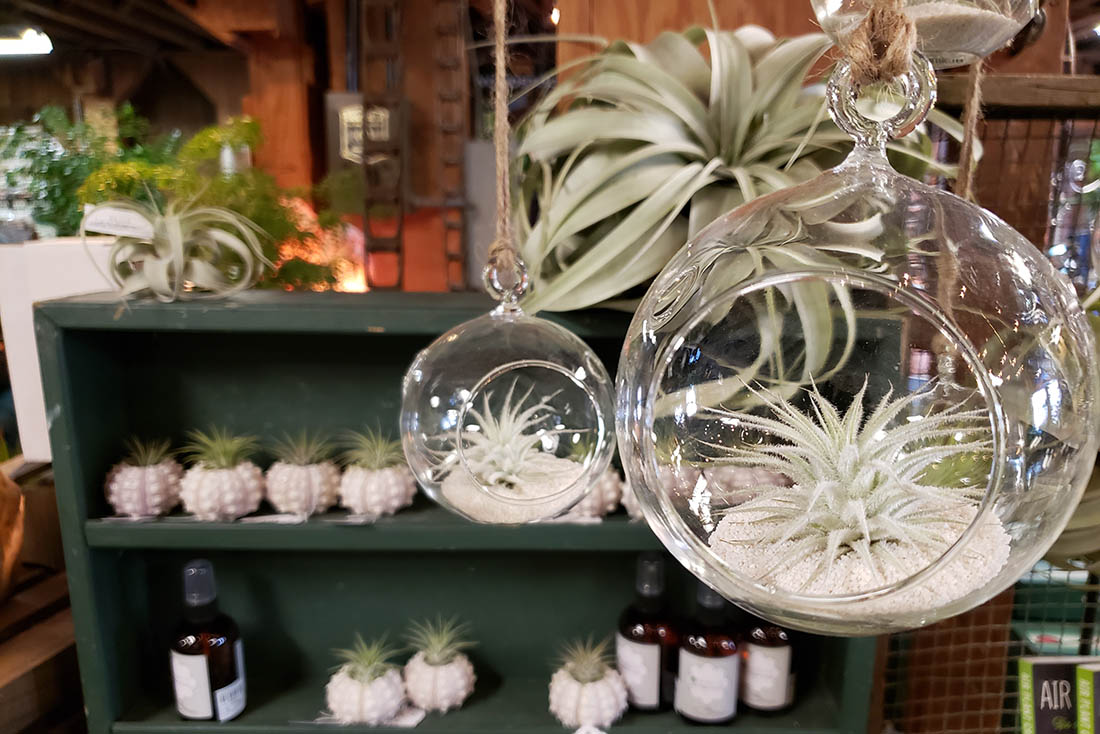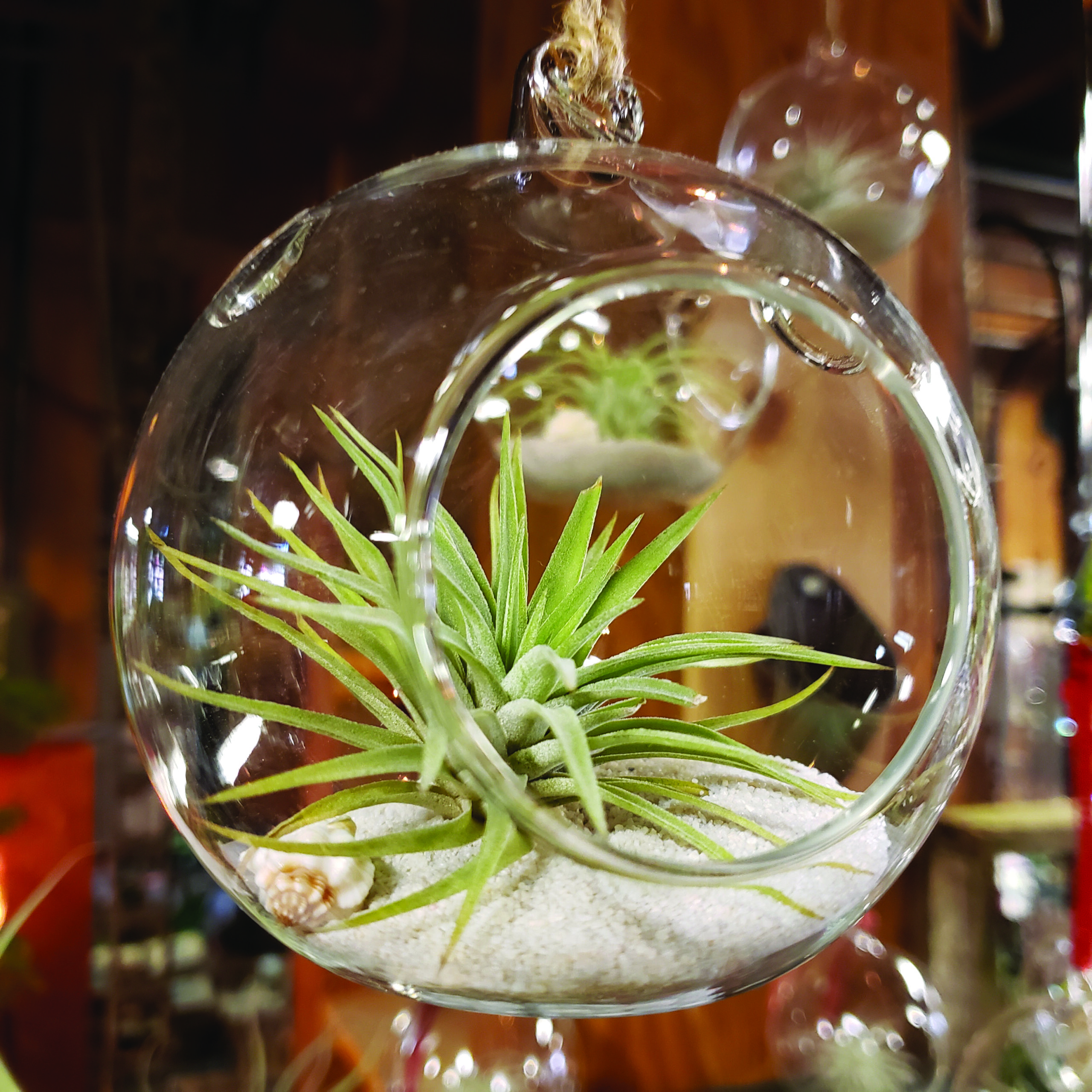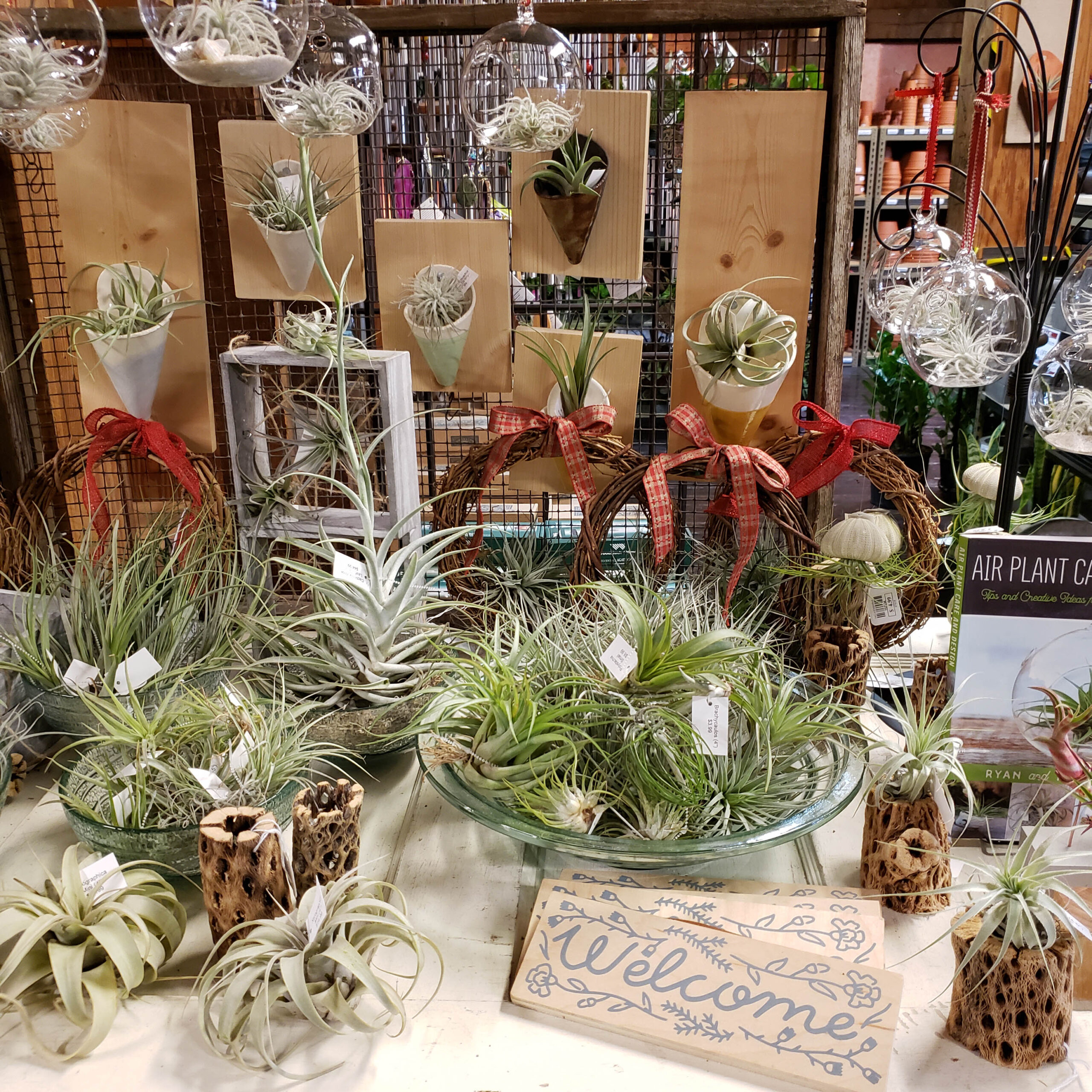Tillandsias, also known as “air plants” are classified as epiphytes, and are the largest genus in the bromeliad family. They are a hardy, low-maintenance, unique addition to your houseplants. They require very little to survive, and can be mounted on nearly anything to make a creative display, as their natural tendency is to use their root systems to attach to rocks or trees. They absorb nutrients and moisture through small scales on their leaves which are called trichomes. The three important things to remember as far as caring for a tillandsia are: water, air, and light.
Light Requirements:
Tillandsias do best with bright, but filtered light. They can be placed near a window or in the windowsill, but try to avoid any direct sunlight especially during summer months, as your plants may burn and get damaged. If you are placing your plants in a terrarium far from natural light, or in an aquarium habitat, a full spectrum florescent light will do nicely. Be sure the plant gets about 12 hours of light a day, and is no further than 36” away from the light source.
Water Requirements:
Never keep tillandsias wet or moist, nor allow them to sit in standing water for a prolonged period of time. Completely submerge your plant in lukewarm water once a week for 15 minutes. Shake off excess water, and dry them upside down on a towel. Allow to fully dry out within 4 hours of watering before placing it back in its home.
Signs of underwatering include an exaggeration of the natural concave curve of the leaves. If you are trying to recoup a dehydrated plant, a good soaking will often do the trick. Just place your tillandsias in a bowl of water and let them soak for one hour or up to a few hours. Give them a gentle shake to remove the excess water, and make sure they have good air flow to dry out adequately.
Air Requirements:
Good air flow is very important, and even more so when placing a tillandsia in a terrarium. They love the humidity that misting will bring, but always make sure the terrarium has enough air flow to let the plant dry adequately and avoid any potential rot. The smaller the terrarium, the higher the risk. They can thrive in a bathroom or kitchen, provided there is an indirect light source such as a window. These rooms usually have fairly high humidity, and tillandsias can do well in this environment.
Fertilizing:
Tillandsias do not need fertilizer, but if desired, you can use at 1/8 of the recommended strength once to twice per month. A bromeliad fertilizer tends to be best for them, though any other water soluble fertilizers could also be used. Fertilizing may allow your plant to bloom- before, during, or after blooming it may produce “pups”, new plants which in turn may eventually bloom. Each plant will bloom only once in their lifetime.
Substrate & Mounting:
Never use soil, as it will cause your plant to rot. They can be mounted on an interesting piece of wood, ceramic or glass, they can be hung on the wall, or from the ceiling. Glass terrariums provide a creative environment to display your live works of art! The possibilities keep coming with these unique plants. Hang them upside down from a hollow shell, place them in a rock that has an interesting shape, a chunk of driftwood, a bowl of rocks and colorful sands… Great ideas and inspiration can be found in terrarium books, and online sources.





